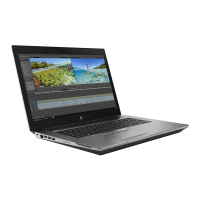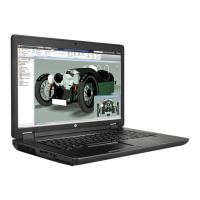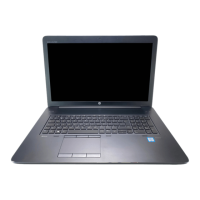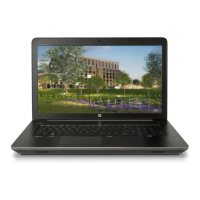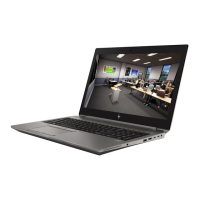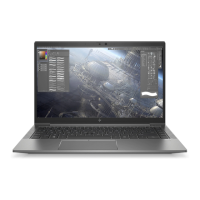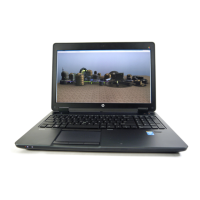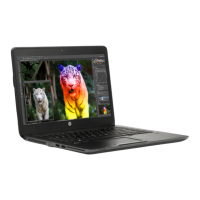Mechanical
Use this information to troubleshoot mechanical issues.
Noise (sound)
Use this information to troubleshoot abnormal noise issues.
Table 7-50 Issues, possible causes, and xes
Items Procedures
Symptoms
Computer emits abnormal noise
Possible causes
Aside from basic components (power adapter, supply, fan, speaker, hard drive, optical drive,
display panel, external devices), it is also common for electronic components to produce noise.
Troubleshooting steps
1. Inspect external power source and change to veried working one.
2. Determine whether the noise comes from AC power adapter. Test with a veried working
AC adapter.
Disconnect external devices and all cables connected to the computer to isolate issue to
computer only.
Noisy fan Determine whether the noise comes from the fan. Disconnect the fan briey to isolate whether
noise originates from fan. If noise is absent with fan disconnected, see Fan runs constantly
on page 164.
Noisy hard drive Determine whether the noise comes from the hard drive.
See Noisy hard drive on page 162.
Noisy optical drive 1. Determine whether the noise comes from an optical drive.
2. Remove CD/DVD from the optical drive.
Noisy speaker 1. Determine whether the noise comes from speaker.
2. Test with a veried working external headset/speaker.
Noisy display Determine whether the noise comes from display panel (humming noise). Change display
frequency settings. See Display on page 142.
The section below is intended for authorized service providers and technicians.
1. After disassembling the chassis, inspect components of the interior for excessive wear or
damage.
2. If noise issues persist, proceed with process of elimination for battery, AC adapter, or
boards.
Fan runs constantly
Use this information to troubleshoot a constantly running fan.
164 Chapter 7 Troubleshooting guide ENWW
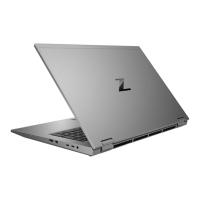
